I’ve tried quail eggs and two different brands of duck eggs—they just taste like everyday chicken eggs. They’re not worth the extra price. Gary Paulsen said that turtle eggs (at least the ones he tried) tasted like old vaseline and were very hard to get down and keep down
Why We Don’t Eat Ostrich Eggs

Ostriches lay the biggest eggs on earth. Officially. On average, one ostrich egg is about 6 inches long and 5 inches wide and weighs roughly two times the weight of a Basketball. Yikes! Makes you wonder, does the Ostrich hen ever complain?

Just like a chicken egg, an ostrich egg will contain a chick embryo only if the egg was first fertilized by a male ostrich. Otherwise, you’ll find only whites and a huge yolk inside of it. The size of the yolk is equal to around 24 chicken yolks! So, one ostrich egg can easily feed a squad of 10 people.
But ostrich eggs aren’t all that edible. Those who tried them say that they taste a lot like chicken eggs: fatty, buttery, and kind of sweet. But the flavor is more intense. They’re also richer in magnesium and iron than chicken eggs but contain fewer vitamins A and E. One ostrich egg will give you about 2,000 calories, while the average chicken egg — only 75 calories.
Cooking and eating them is a chore, so you’ll unlikely have them for breakfast every day. Their shell is extremely thick. You can step on the eggs with both of your feet, and they won’t break. That’s why if you want to cook an omelet using an ostrich egg, you’re going to need a drill or a hammer. And also a really big skillet to fit an egg of that size. No, bigger. Yeah, like that. Boiling the egg will take almost 90 minutes!

But it doesn’t stop some gourmets from buying and cooking this delicacy. Today commercial ostrich farming is developing all over the world. You can find farms in the United States, New Zealand, South America, and so on. Farmers breed the birds and collect eggs from the female ostriches to sell them. In the USA, the average price for one ostrich egg is around 30 dollars.
Although eating ostrich eggs may not be very convenient, archaeologists have found evidence that people figured out many practical and artistic ways to use ostrich eggshells over 100,000 years ago. Different ancient cultures used them as potter combs, arrowheads, and other tools. In Africa, people used shells to store and transport liquids such as water or paint.
Today ostrich eggshells can also be found in art projects and decor. For example, the shell can become a great chandelier if you cut out patterns and paint it. You can also find this material in jewelry: designers use ostrich eggshells to create necklaces, pendants, and anklets. So, if you ever get inspired to do an art project, just contact the nearest ostrich farm in your area. While an ostrich is a bird that lays the world’s biggest eggs, they’re the smallest in proportion to the body. It’s only 2% of female birds’ overall weight.
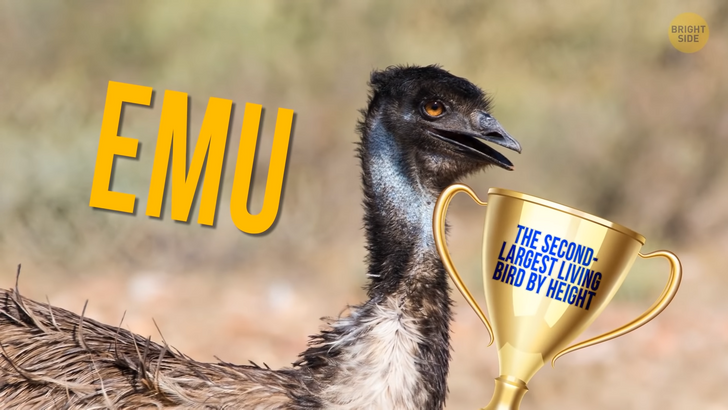
The famous kiwi bird from New Zealand is the size of a domestic chicken but lays eggs that are 6 times bigger compared to the normal egg mass for birds of the same size. How does she do it? Another possible rival to ostriches is the elephant bird. It used to live in Madagascar. But unfortunately, these birds went extinct around 1000–1200 AD, probably because of human intervention.
Modern archaeologists have found many elephant bird eggs that have turned into stone. These eggs are the size of a large watermelon and are even more impressive than the ostrich eggs. Based on its size, we can guess that one elephant egg equals around 120 chicken eggs and might have fed around 40 people.
Ostriches have a smaller relative named emu — the second-largest living bird by height. Emus live in Australia and lay some of the most beautiful and colorful eggs in the world. They are usually light or dark green with an emerald hue. Nowadays, more and more local farmers keep these birds, hoping that the demand for these fancy eggs will grow. Apart from well-known chicken eggs, people all over the world eat eggs of various kinds of birds, including duck, goose, and quail.
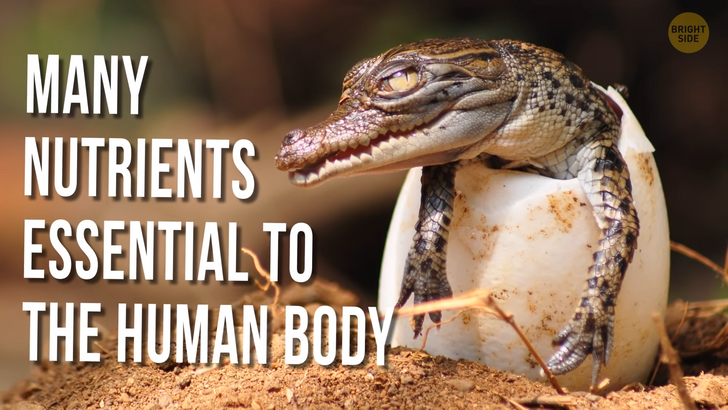
Quail lays small spotted eggs that can be rather expensive in many countries. People consider them a delicacy because this product is highly nutritious. A quail egg contains 5 times more phosphorus and potassium than a chicken egg, and the level of iron is 4.5 times higher. The amount of copper and cobalt is also significant. Although quail eggs are tiny, the recommended amount varies from 6 to 12 eggs a day for one adult.
In some South American countries, such as Brazil, Colombia, and Venezuela, quail eggs are not that rare and exotic. It’s a common topping for street food such as burgers and hot dogs. Filipinos use quail eggs to prepare a popular street food snack, kwek-kwek. They soft-boil them and then fry them with orange-colored butter. Not just birds, but lots of other animals lay eggs.
Crocodile eggs are not only edible but reportedly tasty and nutritious food. They don’t contain any yolk but still have many nutrients essential to the human body. Studies have shown that eating crocodile eggs can help clean the blood vessel walls from fat and improve brain functions.
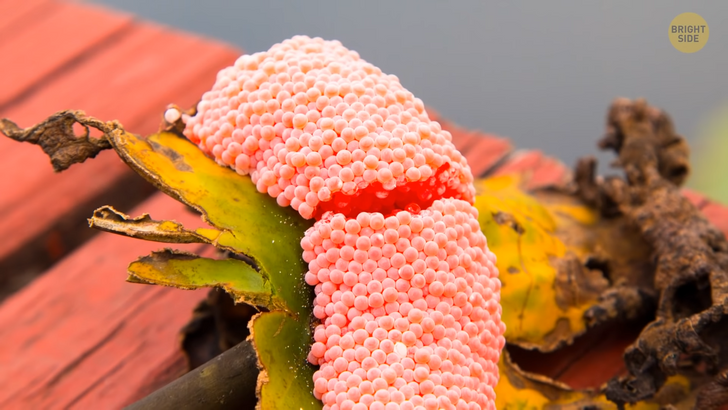
The obvious disadvantage of this product is that you can’t get it that easily. Crocodiles are one of the most protective mothers in wild nature. Therefore, the safest way to buy a crocodile egg is to go to a special farm. And then the fun starts: How to obtain a said egg. It’s simple. You just reach in there and get the egg. Me? NOOOO, nuh-uh. I like my arms the way they are.
These little white ovals look like rice, but you’re looking at ant eggs, or in other words — ant larvae. This ingredient has been very popular in Mexican cuisine for thousands of years. It’s also known as Mexican caviar or escaroles. Reportedly, this dish has a buttery and nutty flavor and can be rather crunchy when fried. People add escaroles as a topping to tacos or eat them as a separate dish.
Weaver ant eggs are rich in protein and very popular all-over Southeast Asia. They make a must-have ingredient for salads in Thailand and Laos. These ant eggs have a sour taste and can successfully replace lemon juice in some recipes. If eating ant larvae sounds too extreme for you, maybe you’d prefer snail eggs, which are better known as escargot caviar. It’s a popular delicacy in Italy, France, and other European countries.
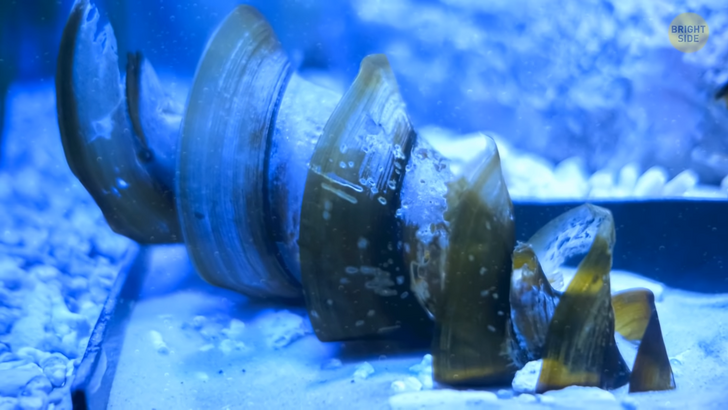
Snails do everything slowly, and egg-laying is not an exception. Producing these eggs takes 8 months when manufacturers use accelerated maturing techniques or from 2 to 3 years when it happens naturally. This is why the price for one small jar of escargot caviar can be around $100.
People also eat unfertilized shark eggs. These eggs have an unusual spiral shape, which allows the female shark to safely hide them in rock formations and protect her future offspring from predators. Chemical research has proved that shark eggs have high nutritional value. They’re rich in amino acids and contain very high amounts of vitamins E, and A. Shark eggs range in size up to the size of chicken eggs. If you’re lucky enough to find them — and survive — you can cook shark eggs in the same fashion as chicken eggs.
In some countries, nearly raw turtle eggs are a popular meal. They put soft-shell turtle eggs in boiling water for 30 seconds with onions or garlic. After this simple routine, the eggs look like ping pong balls and serve as an ingredient for salads. Since many turtle species, especially sea turtles, are endangered, it’s only safe and legal to eat eggs sustainably sourced from registered turtle farms.
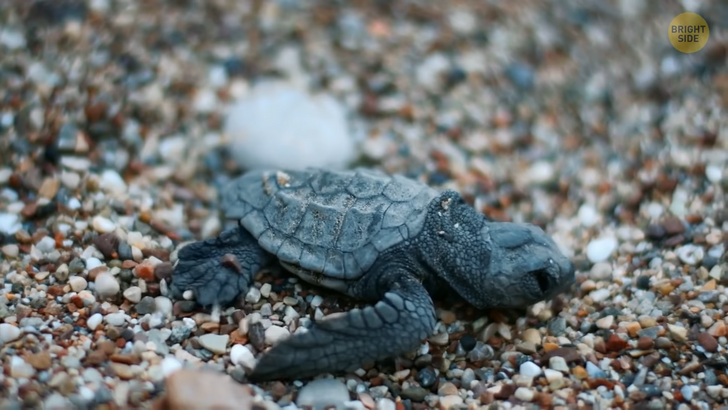
Turtle eggs are extremely healthy food to eat. The content of beneficial minerals in a soft-shell turtle egg is twice higher than that of a chicken egg. And it has far fewer calories. On average, one turtle egg adds around 45 calories to your diet: that’s less than a chicken egg.
Fish eggs are famous for their exotic flavor and high price. Iranian Beluga fish is the champion in this field. It makes the most expensive fish caviar on the planet called ’Almas.’ This ’black gold’ has hit the Guinness World Records as the world’s most expensive food.
’Almas’ is produced from the eggs of a rare albino sturgeon between 60–100 years old. This fish swims in the southern part of the Caspian Sea. The price for 2 pounds of this caviar amounts to $28,000! Wow, what happens if it somehow falls off your cracker? Oops, there goes $500!
Comments
Related Reads
Australian Comedian Recreates Celebrity Pics, and People Call Her the “Queen of Comedy” for Her Uproarious Parodies

The Story of the Baby Who Challenged Doctors With His Rare Disorder for 20 Years

I Refuse to Let My Sister Step Inside the Home I Bought for Our Parents — and I’m Not Sorry

I Refuse to Keep Supporting My Daughter and Her 5 Kids for Free

I Told My Stepson to Pay Rent or Move Out, I Don’t Care If He’s Unemployed

I Refuse to Be a Wallet for My Girlfriend’s Kids, and Her Family Is Calling Me Selfish

My Parents Treated My Sister Like a Princess and Me Like Nothing—Big Mistake

11 Times People Showed That Real Courage Isn’t Loud—It’s Kind

I Refuse to Beg for Time With My Grandson

I Tried Reporting My Toxic Boss, but HR’s Policy Made Me Regret It

11 People Who Chose Kindness Over Looking Away

I Let My MIL Join Our Family Trip—And It Turned Into Chaos
